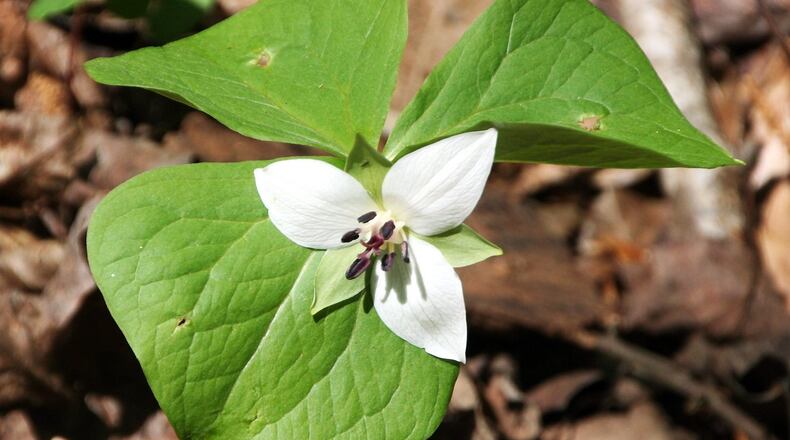I can’t imagine early spring in Georgia without trilliums, prime symbols of the season.
Many of us plant lovers consider trilliums as the wildflower stars of woodlands in spring. No other wildflowers, it seems, elicit as many "oohs and ahs" from fellow Georgia Botanical Society members as do trilliums during our field trips in early spring.
MORE:
Georgia is trillium central. It has more trillium species—at least 22—than any other state. They are found mostly in moist, shady, mature hardwood forests in all parts of the state, from steep mountain slopes to rich Coastal Plain ravines.
Nine of Georgia’s trillium species are listed as plants of special concern, meaning they are facing threats such as habitat loss, to their survival.
The promise of seeing a particularly splendid species, the Southern nodding trillium (Trillium rugelli), in various stages of bloom last weekend drew several members of the Georgia Botanical Society to a woodland path in the Cochran Shoals Trail of the Chattahoochee River National Recreation Area. We were not disappointed. In one area, scores of nodding trilliums nearly covered the forest floor.
RELATED VIDEO:
Along the way we also admired two other species: the pink-flowered Catesby’s trillium and the maroon-flowered Sweet Betsy trillium.
Trilliums' name come from the Latin word for three, or tri. Trillium blossoms have three petals, three sepals, six stamens and a three-celled ovary. A large solitary flower—white, pink, red, maroon or yellow, depending on the species—blooms above a cluster of three large leaves.
With the warmth of early spring, trilliums quickly send up stems, leaves and flowers before the forest canopy leafs out. By summer, after they have produced seeds, the trilliums’ above-ground portion will be gone. For the rest of the year, they will persist as underground rhizomes until they emerge again next spring.
Mature trilliums, in fact, can live as long as 100 years.
IN THE SKY: From David Dundee, Tellus Science Museum astronomer: The moon will be full on Tuesday. Mercury is low and Venus and Mars are very low in the west around dusk. Jupiter rises out of the east around sunset and will appear near the moon on Monday night. Saturn rises in the east just before midnight.
About the Author





